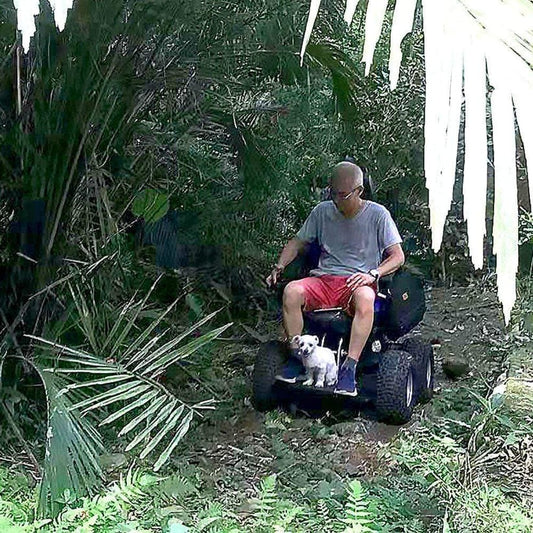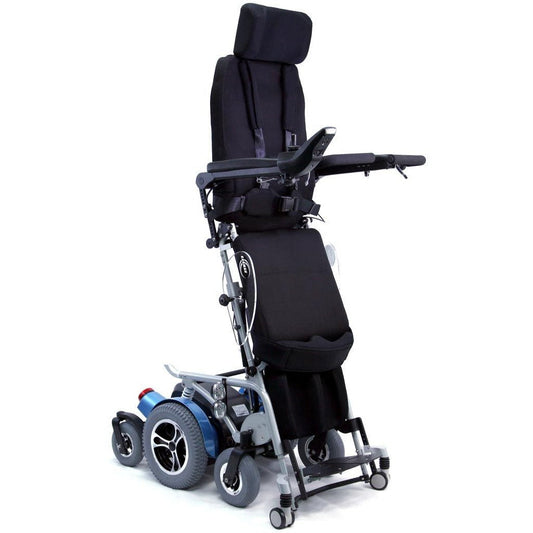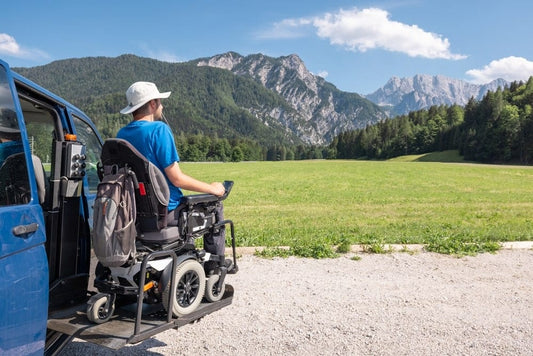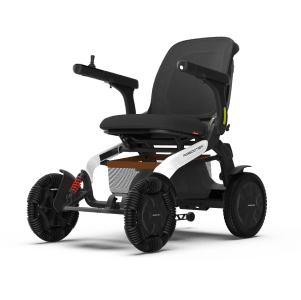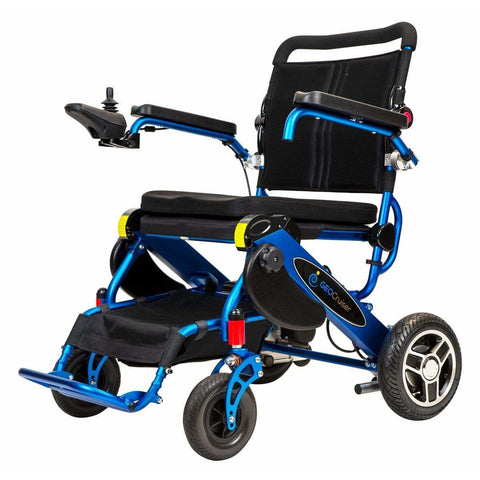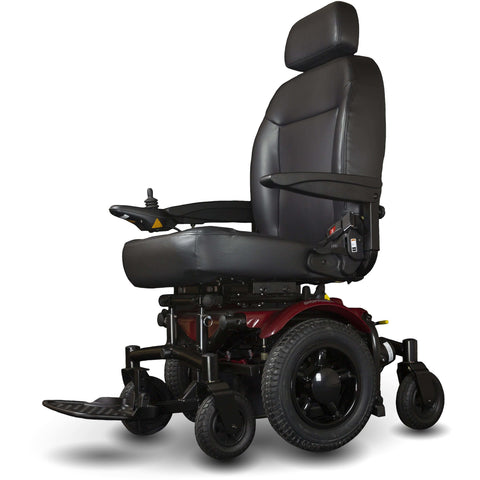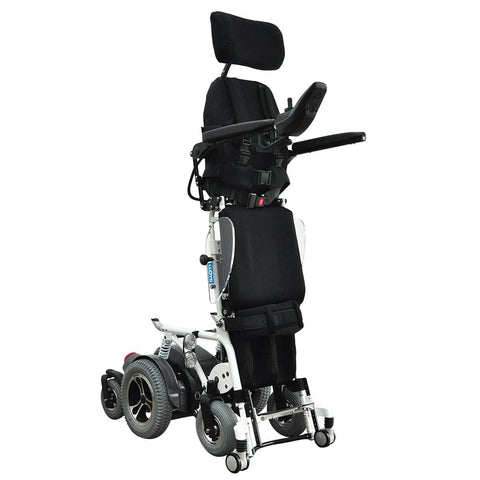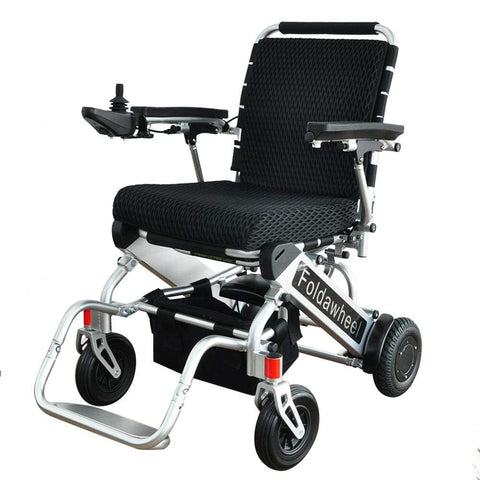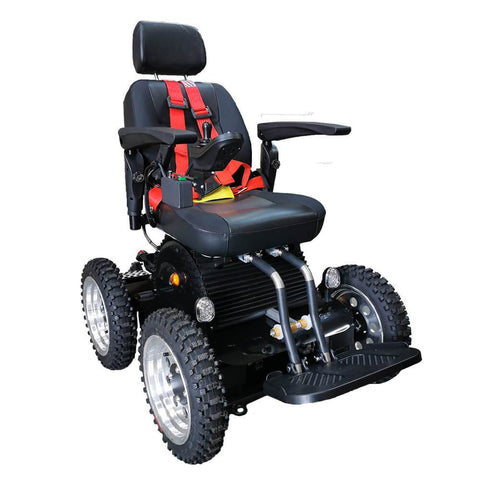Introduction to outdoor wheelchairs
Outdoor wheelchairs are specifically designed to provide mobility and access to outdoor activities for individuals with physical disabilities. They are built with sturdy wheels and durable materials to handle various terrains such as gravel, dirt paths, and even some off-road conditions. Outdoor wheelchairs also offer features such as adjustable seat heights, specially designed brakes, and ergonomic designs for comfort during longer periods of use.

The benefits of outdoor wheelchairs for adventure seekers
If you're an adventure seeker and rely on a wheelchair, you may want to consider outdoor wheelchairs. These specialized wheelchairs are designed for off-road terrain, allowing you to explore nature, go on trails, and enjoy outdoor activities without limitations. Here are some benefits of outdoor wheelchairs:
- All-Terrain Capability: Outdoor wheelchairs are designed to handle various types of terrain, including grass, gravel, sand, and uneven paths, providing you with the freedom to explore outdoor environments.
- Enhanced Stability: These wheelchairs are equipped with sturdy tires and advanced suspension systems, offering improved stability and maneuverability on challenging terrains.
- Greater Independence: With outdoor wheelchairs, adventure seekers can gain greater independence and experience the thrill of outdoor adventures without having to rely on assistance from others.
-
Improved Mental and Physical Health: Access to the outdoors can have positive effects on mental and physical well-being, and outdoor wheelchairs enable individuals to engage in outdoor activities and connect with nature.
Whether you're a nature enthusiast, hiker, or simply enjoy outdoor activities, outdoor wheelchairs can open up a world of adventure and exploration, providing you with the freedom to pursue your passions without limitations.
Types of outdoor wheelchairs
Outdoor wheelchairs come in various types, each designed for different terrains and activities. Here are some common types of outdoor wheelchairs:
- All-terrain wheelchairs: These are designed for rough and uneven terrain such as gravel, dirt, sand, and grass. They typically feature large, rugged wheels and sturdy frames to handle outdoor obstacles.
- Beach wheelchairs: Specifically designed for use on the beach, these wheelchairs have wider wheels to glide over sand without sinking, and some models even come with floating features for entering the water.
- Hiking wheelchairs: Built for off-road trails and hiking adventures, these wheelchairs have durable frames, shock absorbers, and enhanced suspension to navigate through rugged, natural terrain.
- Urban outdoor wheelchairs: These are designed for navigating city streets, sidewalks, and other urban environments, and may feature compact designs for easy maneuvering in crowded places.
These different types cater to the specific needs of adventure seekers, providing them with the opportunity to explore the great outdoors with ease and comfort.
Considerations when choosing an outdoor wheelchair
When choosing an outdoor wheelchair, consider the terrain you plan to explore. Look for sturdy, high-quality tires that can handle rough surfaces like gravel or dirt paths. Additionally, opt for a lightweight yet durable frame that can withstand the elements while remaining easy to maneuver. Adjustable seating and customizable features can also enhance comfort and functionality, allowing you to tailor the wheelchair to your specific needs. Lastly, ensure that the wheelchair's design allows for easy transport, storage, and maintenance, especially if you plan to take it on adventures.
Features to look for in outdoor wheelchairs
When choosing an outdoor wheelchair, consider features such as durable all-terrain tires, adjustable seat and backrest, lightweight frame, foldable design for easy transportation, and water-resistant materials for outdoor use. These features can enhance your outdoor experience and provide greater mobility on various terrains.
Tips for maintaining outdoor wheelchairs
When maintaining outdoor wheelchairs, it's important to regularly check for any signs of wear and tear. Here are some tips to help you keep your outdoor wheelchair in top condition:
- Inspect the tires: Check for any punctures, worn treads, or signs of damage. Replace or repair as needed to ensure smooth and safe operation.
- Clean the frame and components: Regularly wipe down the frame and components with a damp cloth to remove dirt, debris, and moisture. This will help prevent rust and corrosion.
- Lubricate moving parts: Apply lubricant to the wheel bearings, axles, and other moving parts to maintain smooth movement and prevent excessive wear.
- Check the brakes: Test the brakes to ensure they are functioning properly and adjust as necessary for optimal performance.
By following these maintenance tips, you can ensure that your outdoor wheelchair is always ready for your next adventure.
Personal stories of adventure seekers using outdoor wheelchairs
Discover how outdoor wheelchairs have transformed the lives of adventure seekers. Hear firsthand accounts of individuals conquering the great outdoors and embracing new experiences with the help of specially designed wheelchairs. Explore the freedom and joy these wheelchairs have brought to their lives, and learn how they have overcome obstacles to pursue their passion for adventure.
How to find the right outdoor wheelchair for your needs
When choosing an outdoor wheelchair, there are several factors to consider in order to find the one that best meets your needs. Here are a few key points to keep in mind:
- Terrain: Consider the types of outdoor environments you plan to navigate, such as rugged trails, sandy beaches, or hilly areas. Choose a wheelchair with features that can handle these terrains effectively.
- Wheel Size and Type: Larger wheels provide better stability and maneuverability over rough terrain, so consider wheel size and type carefully.
- Frame Material: Look for a wheelchair made of durable and lightweight materials, such as aluminum or titanium, to ensure it can withstand outdoor conditions while remaining easily transportable.
- Seating and Comfort: Ensure the wheelchair provides adequate support and comfort for extended outdoor use, with options for adjustable seating, cushions, and backrests.
By considering these factors, you can identify the outdoor wheelchair that aligns with your specific adventure-seeking needs.
Exploring outdoor activities with a wheelchair
If you're planning to engage in outdoor activities with a wheelchair, there are specific outdoor wheelchairs designed to offer mobility and stability on various terrains. These outdoor wheelchairs are equipped with features such as large, air-filled tires and durable frames to navigate through rough, uneven surfaces. Some outdoor wheelchair models also come with additional accessories like all-terrain wheels and adjustable seating to provide a comfortable and secure experience during your outdoor adventures. Whether it's exploring nature trails, participating in outdoor sports, or simply enjoying the outdoors, outdoor wheelchairs can provide adventure seekers with the freedom and accessibility to engage in a wide range of outdoor activities.
Conclusion: Embracing adventure with outdoor wheelchairs
Outdoor wheelchairs allow individuals with mobility challenges to venture into nature and experience thrilling outdoor activities. These specially designed wheelchairs are equipped with rugged tires and sturdy frames, enabling users to navigate through various terrains such as trails, beaches, and parks. Embracing adventure with outdoor wheelchairs promotes inclusivity and provides a sense of freedom and independence for individuals who love the great outdoors. Whether it's exploring scenic trails or participating in outdoor sports, these wheelchairs open up a world of exciting opportunities for adventure seekers with mobility limitations.


